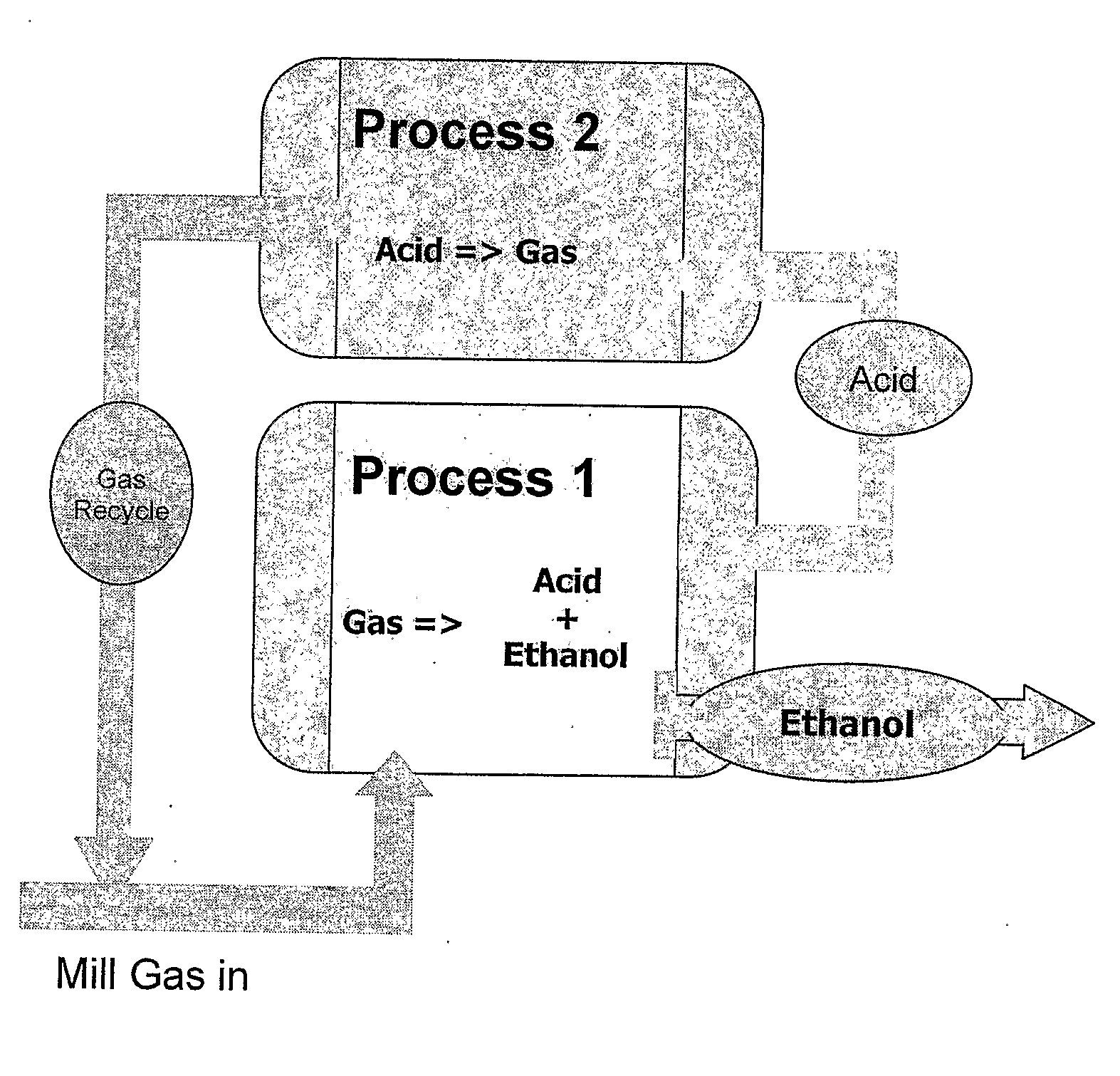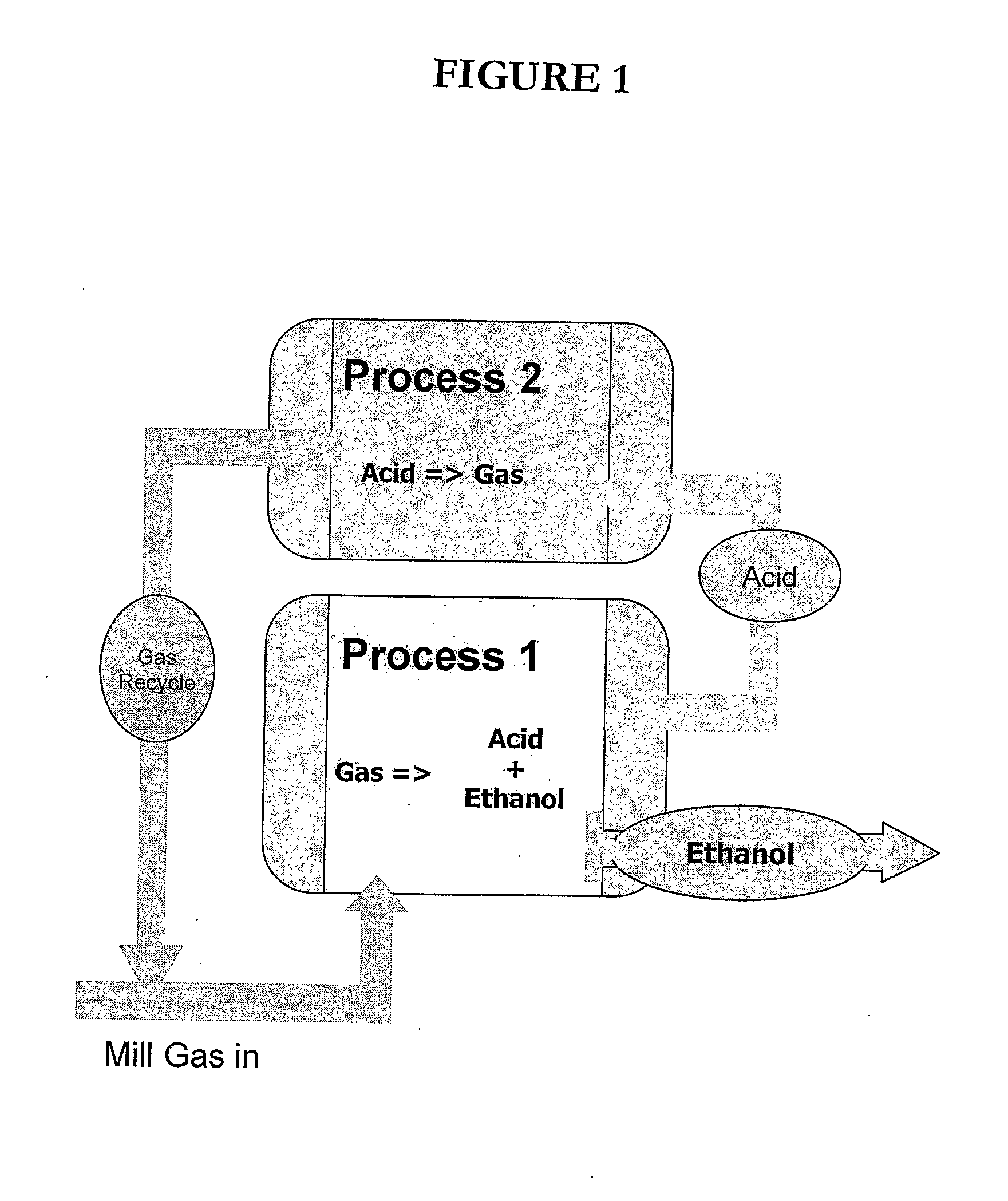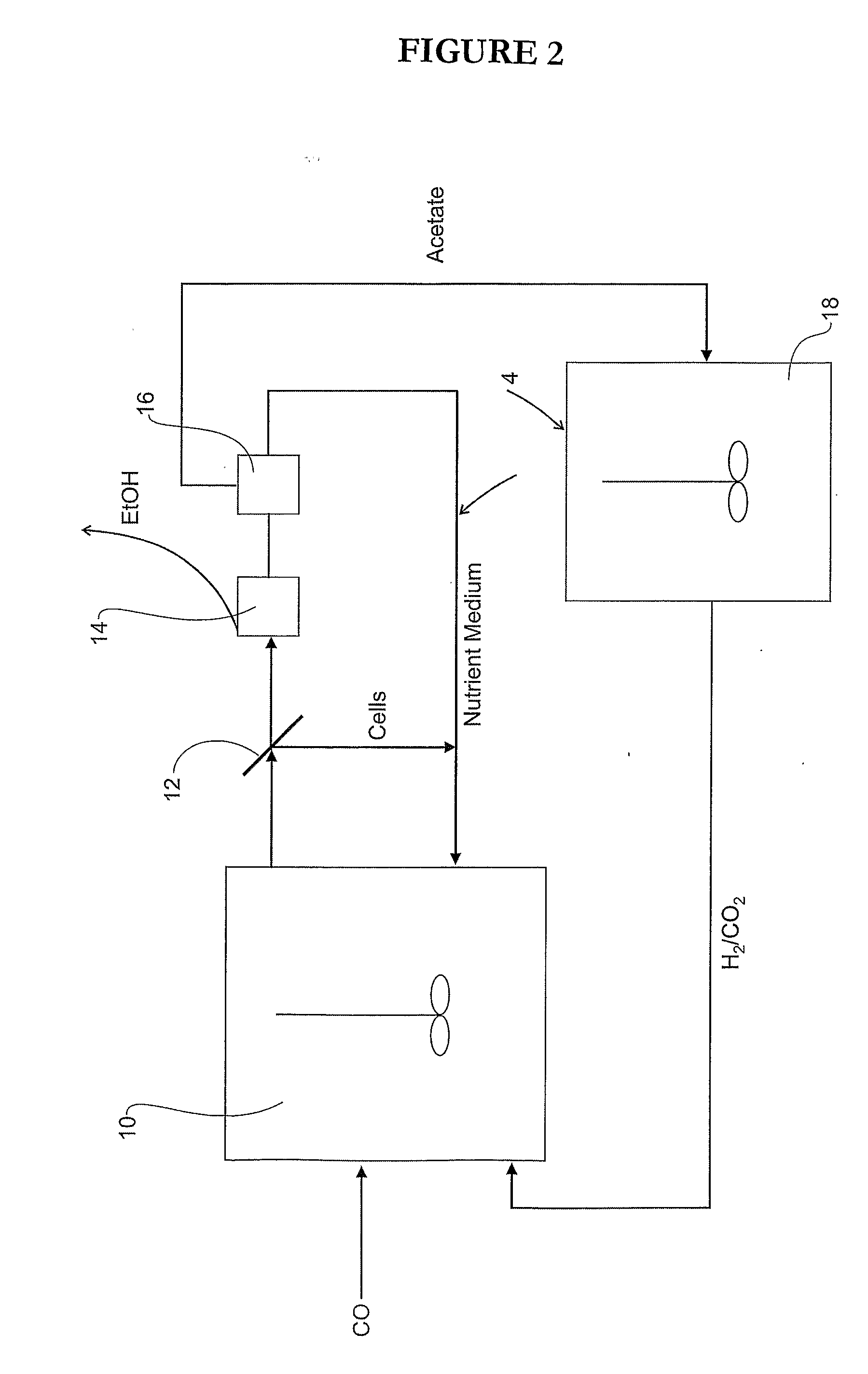Microbial Fermentation of Gaseous Substrates to Produce Alcohols
a technology of gaseous substrates and fermentation processes, applied in the direction of fermentation, biofuels, etc., can solve the problems of affecting the cost of these carbohydrate feed stocks, the economic sustainability of starch or sucrose-producing crops for ethanol production in all geographies, and the efficiency of ethanol production using such fermentation processes may be less than desirabl
- Summary
- Abstract
- Description
- Claims
- Application Information
AI Technical Summary
Benefits of technology
Problems solved by technology
Method used
Image
Examples
example 1
Adaptation and Growth of Clostridium autoethanogenum with Zero Hydrogen Gas Mixes
[0153]Aim: to determine the impact on the growth of C. autoethanogenum of 5 ml of hydrogen gas in a headspace of 10 ml of 95% CO, 5% CO2 pressurized to 25 psig.
[0154]15 ml Hungate tubes containing 5 ml of bacterial culture in a defined medium were incubated at 37° C. with either with a headspace of 95% CO, 5% CO2, or 1 ml H2 gas in a 95% CO, 5% CO2 gas mix. All tubes were pressurized to 25 psig with 95% CO, 5% CO2 gas.
[0155]Bacterial growth was determined by measuring the optical density (OD) at 620 nm of the culture broth after 0, 2, 5 and 10 days using a DYNEX technologies, opsys MR plate reader.
[0156]Note: for day 10, data is only available for the growth of C. autoethanogenum in Hungate tubes with a headspace containing with 95% CO, 5% CO2
[0157]Results
[0158]In each case, data shown is the average of three replicates.
95% CO,1 ml H2 + 95% CO,Days5% CO2std dev5% CO2 + H2std dev00.0390.0000.0390.00020....
example 2
Geobacter sulfurreducens Grown on Acetate
[0160]Aim: to determine the kinetics of acetate degradation by Geobacter sulfurreducens
[0161]For this experiment, Hungate tubes with an internal volume of 30 ml were inoculated with 10 ml of a fresh water basal media containing 20 mM reagent grade acetic acid as the sole carbon source for bacterial growth. Tubes were autoclaved, after which, for each tube, the pH of the solution was adjusted to 6.5 and the Redox potential of the solution was adjusted to ˜−85 mV. Tubes were inoculated with 0.1 ml of G. sulfurreducens and incubated at 35° C.
[0162]Acetate levels were measured using a Hewlett Packard 5890 (II) gas chromatograph.
[0163]Results:
[0164]All data points are the average of at least two replicates.
Days03611Acetate (g / l)1.2920.1350.2100.216Std Dev0.1390.0110.1060.095
[0165]The results are shown graphically in FIG. 4 and describe the degradation of acetate with time by G. sulfurreducens. Under the conditions used, acetate degradation had ce...
example 3
Geobacter sulfurreducens Hydrogen Production in Serum Bottles
[0166]Aim: to collect and measure biologically produced hydrogen gas resulting from the degradation of acetate by G. sulfurreducens from the headspace of these cultures, for use as a substrate in the gas to ethanol reaction.
[0167]Materials:[0168]1. G. sulfurreducens subculture[0169]2. LM12 acceptor limiting media with 20 mM acetate and 20 mM fumarate. Media is enclosed in 240 mL serum bottles stoppered with thick butyl rubber septum, under a headspace of food grade carbon dioxide evacuated to −25″ Hg.[0170]3. Needles, syringes and isopropanol wipes.[0171]4. Incubator at 35° C.[0172]5. Shaking platform set at 50 RPM.[0173]6. 4, 5 and 10 M KOH solution.[0174]7. Oxygen free nitrogen[0175]8. Food grade carbon dioxide.[0176]9. ¼′ thick butyl rubber tubing.[0177]10. 0.22 um syringe filters[0178]11. Sterile 240 mL serum bottle under atmosphere of carbon dioxide[0179]12. Luer-lok 2-way stopcocks (Bio-Rad)
Gas collected from G. sulf...
PUM
| Property | Measurement | Unit |
|---|---|---|
| volume | aaaaa | aaaaa |
| concentration | aaaaa | aaaaa |
| energy | aaaaa | aaaaa |
Abstract
Description
Claims
Application Information
 Login to View More
Login to View More - R&D
- Intellectual Property
- Life Sciences
- Materials
- Tech Scout
- Unparalleled Data Quality
- Higher Quality Content
- 60% Fewer Hallucinations
Browse by: Latest US Patents, China's latest patents, Technical Efficacy Thesaurus, Application Domain, Technology Topic, Popular Technical Reports.
© 2025 PatSnap. All rights reserved.Legal|Privacy policy|Modern Slavery Act Transparency Statement|Sitemap|About US| Contact US: help@patsnap.com



